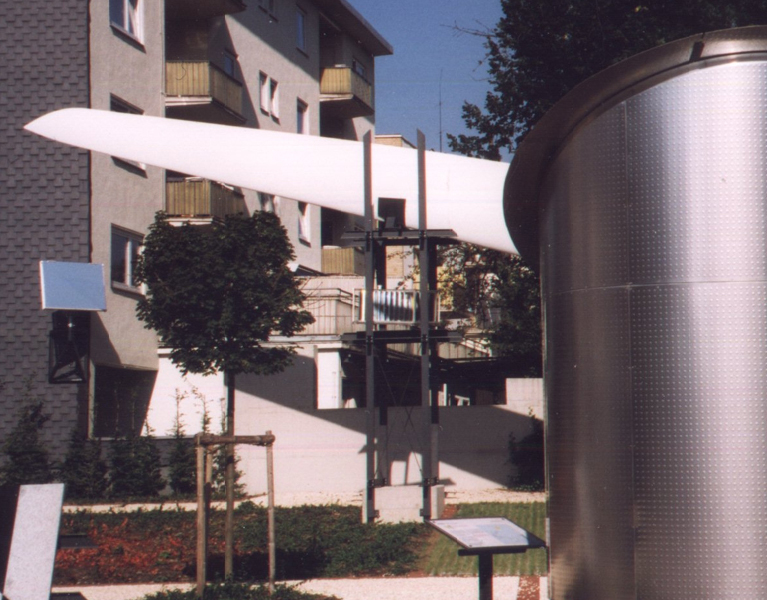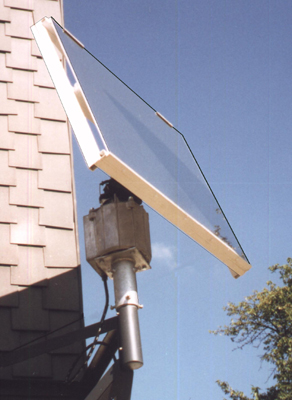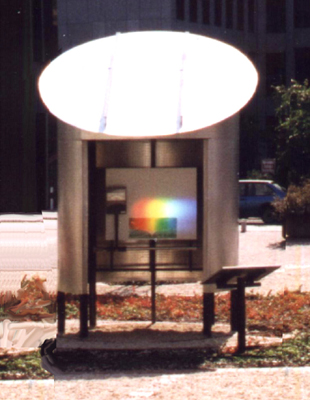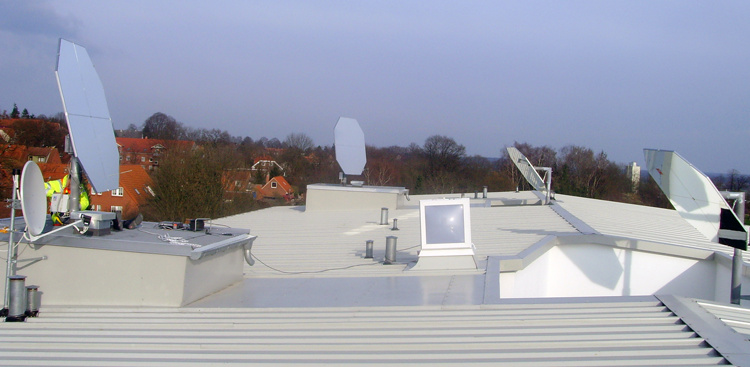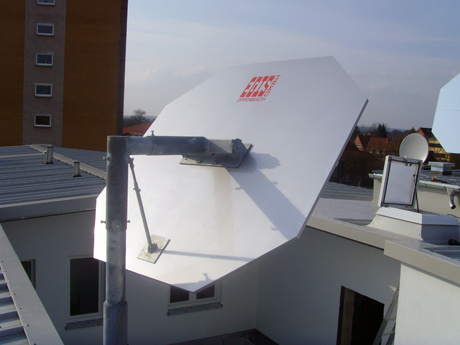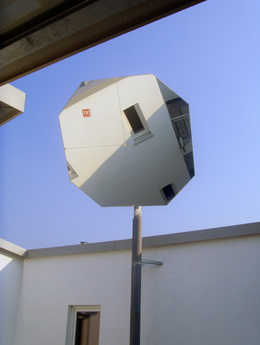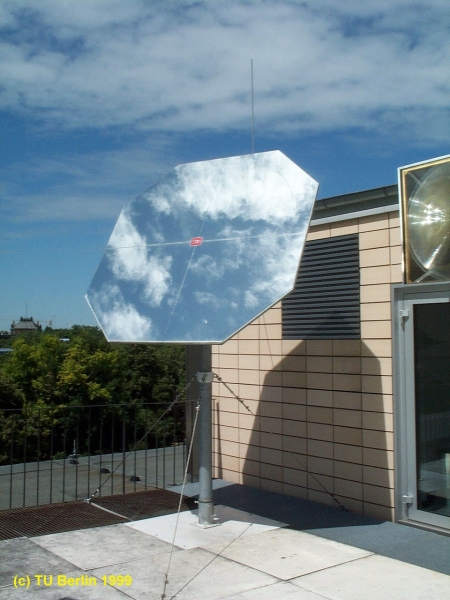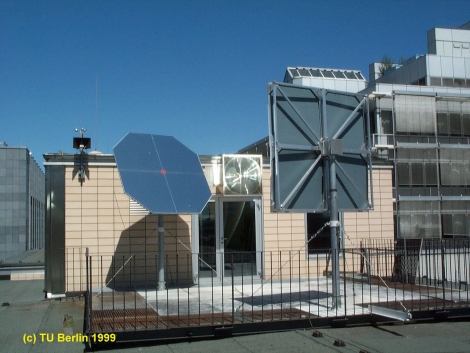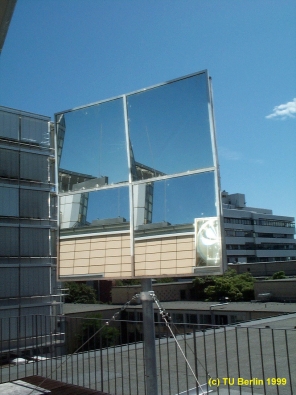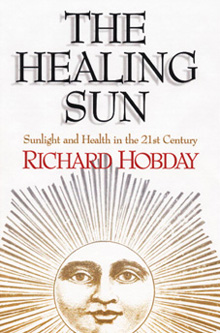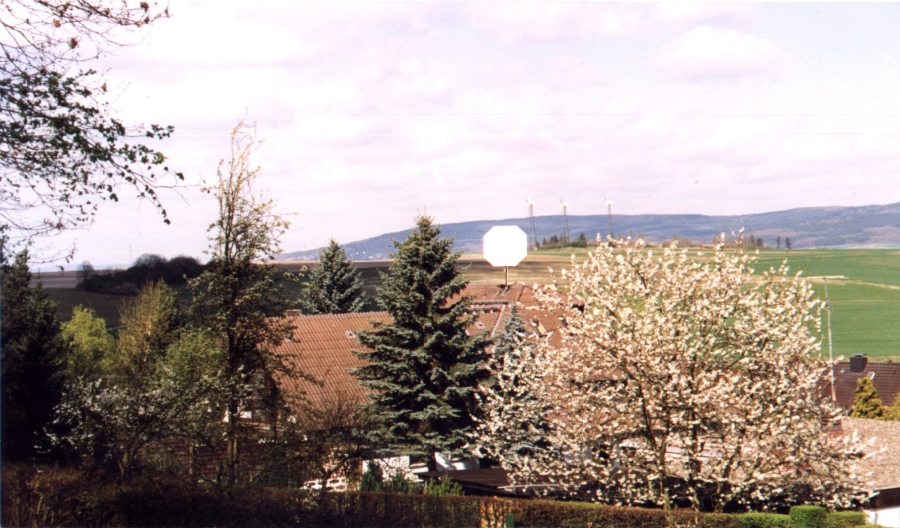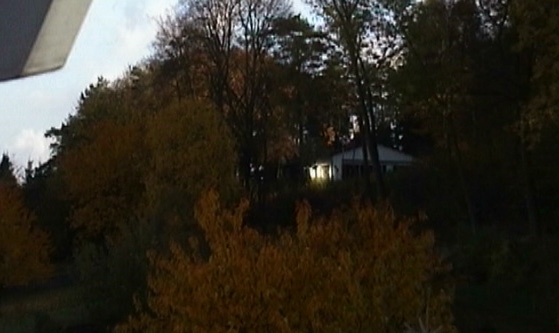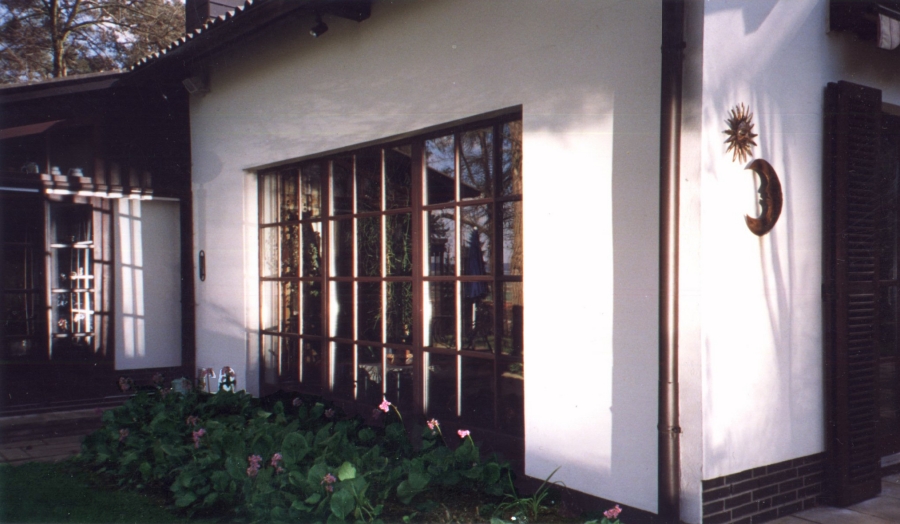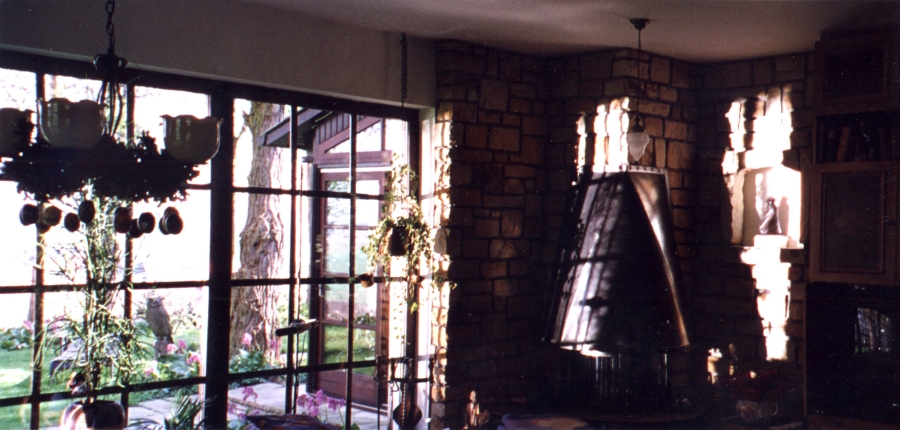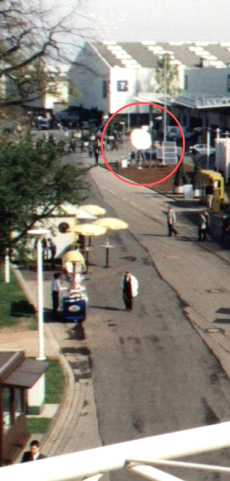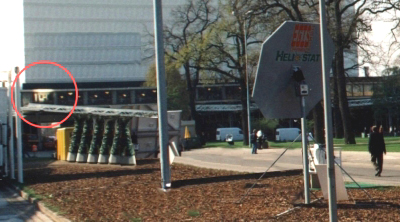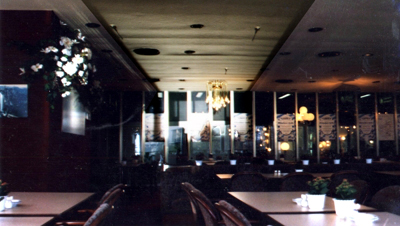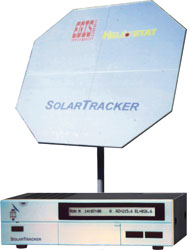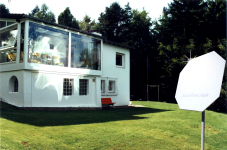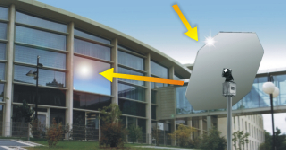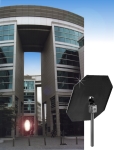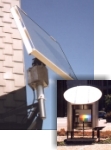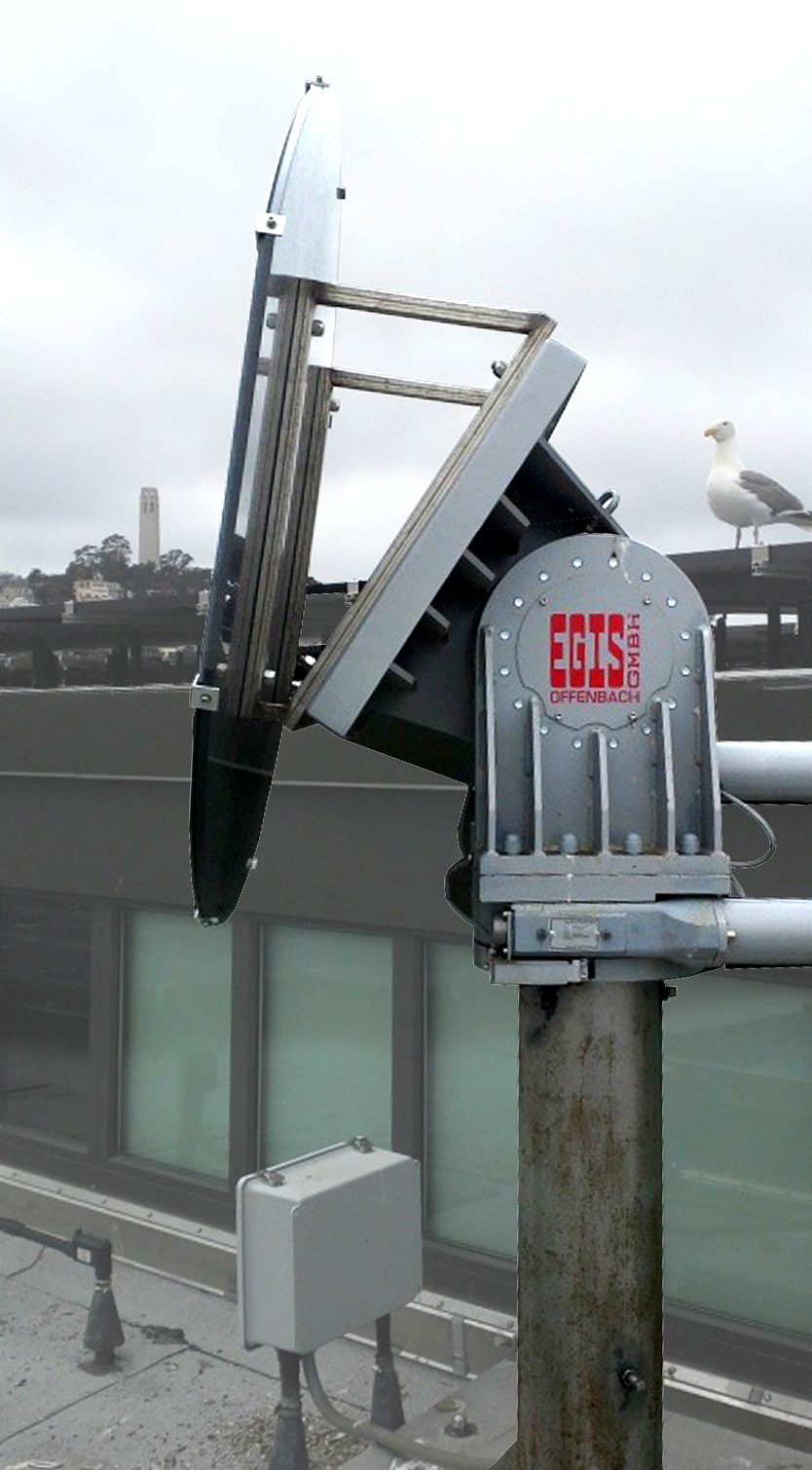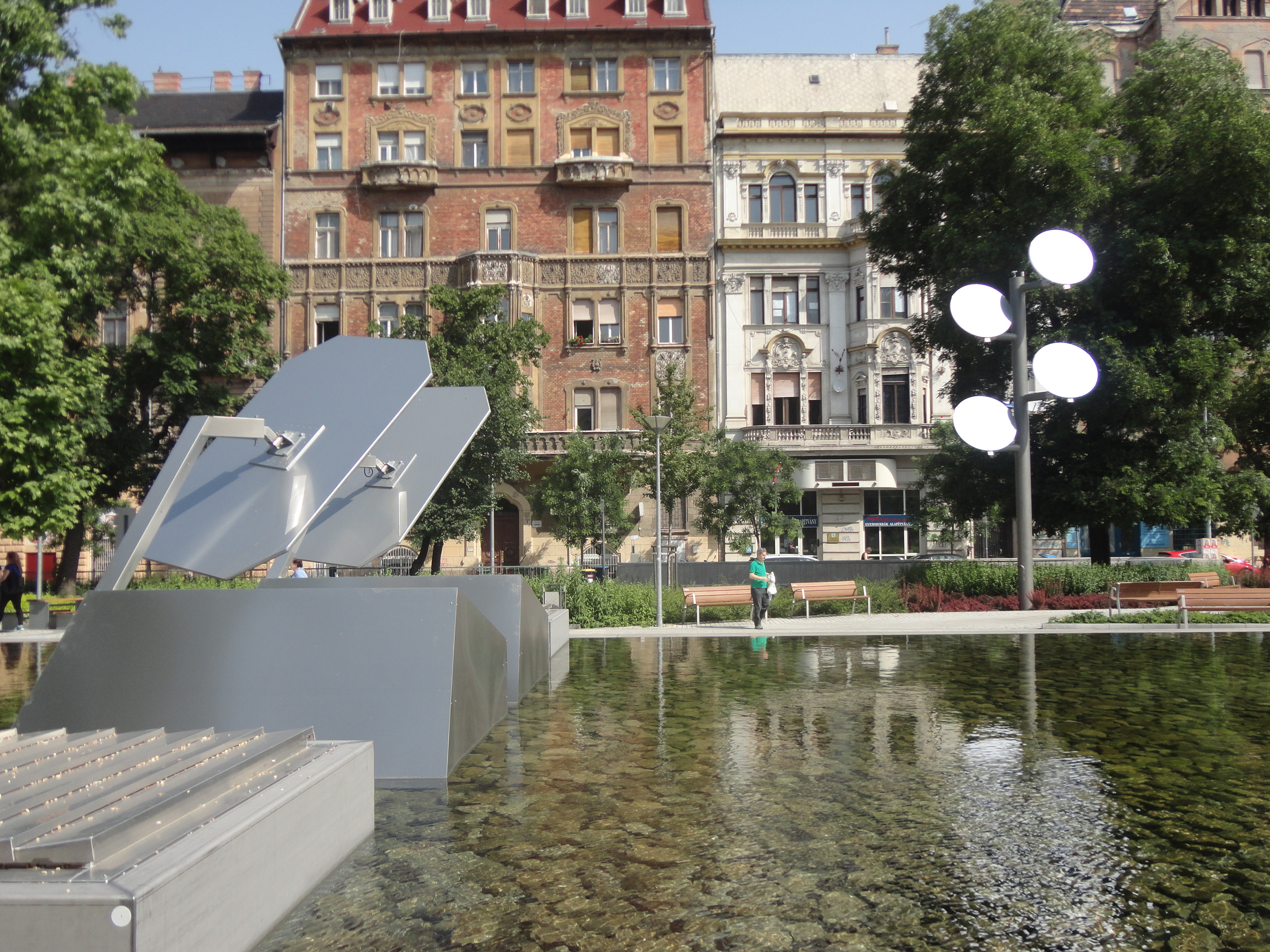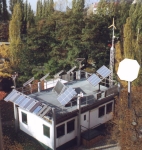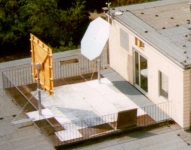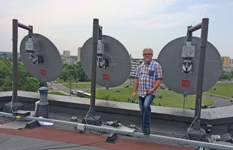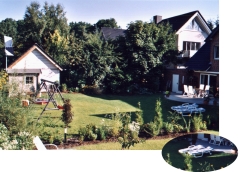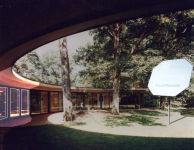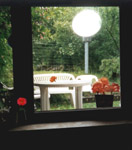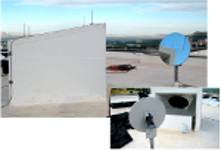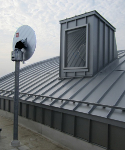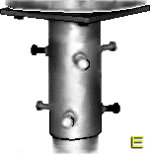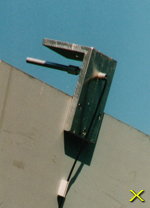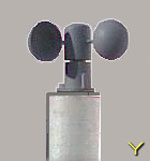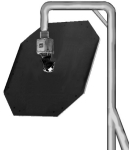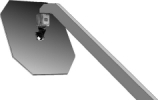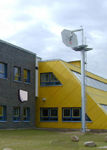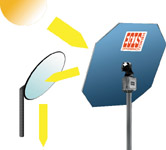By utilization of the visible part of sunlight for illumination of buildings, you may reduce the artificialially generated part of energy. This is valid especially for office and workrooms, where daytime profil of sunlight often matches the requirements of illumination. Especially in office-rooms with a great depth you may gather a significant reduction of energy waste, because illumination can reach as 40 % of the entire energy consumption. Additionally in cold weather periods with help of sunlight (particullary using the infrared part of it) you may reduce heating affords by leading sunlight into rooms. See some figures: Top value of the sunlight energy in Freiburg (i. Br., southern Germany) reaches the value appr. 1.85 kW/m2 in a hot summer day. If you accept only the half value – for safety purposes – got in practice, than 2,3 kWs of energy are transported into the building by using the type of EGIS-Heliostat with 3 m2. And: Get that during 200 days with a total of 1400 to 1800 hours every year! This are important economic arguments and them are to be watched within modern room illumination calculations. However more important appear the physiological benefits of nature light. It is a known fact that whole mankind is sun oriented. It does not make any difference if a man is living at the equator or north-pole. You know it already, he needs the daylight for health, cosmetic, fitness and well-being. Did you know, that sunlight heals (more about that topic)?
However especially the "bringing of daylight into the depth of the room" well with conventional as also with modern architectonical methods needs considerable affords (expenses).
"Living" and "working" do not differ in the requests corresponding to the illumination. For both many things were invented, attempts were made and done at the planning and preparation of new buildings. But this is to see different with older buildings.
Here you now get a system that is even good for older buildings as for new built constructions with only low cost affords. You get a brillant cost-to-efford shape: the Heliostat made by EGIS.
This sun deflection system consists out of the proven Solar Tracker (made by the scientific/technical production department of EGIS) and a big light reflector (flat mirror). The Solar Tracker contains the outdoor unit – the motor driven two-axis-positioner (rotor) and the indoor unit – the computer control.
The reflector/mirror consists of a 0.8 m2, 1.8 m2, 3.0 m2, 4,0 m2 or 5,5 m2 back-coated flat mirror made of mineral glass (DIN 1238)* or of an multilayer aluminium mirror of 3 mm thickness.
For the version measuring 0.8 m2, the surface of the mirror is made of one single piece of mirror. For the version measuring 1.8 m2 and 3.0 m2, the surface consists of 2 or 3 mirror pieces. The versions with mirrors of 4,0 and 5,5 m2 have a four-section mirror surface.
All mirrors are armed by a very low torsion 25 mm aluminium sandwich plate with aluminium honeycomb core seamlessly made out of one piece.
Survival of the plant with 3.0 m2 is guaranteed til wind speeds up to 150 km/h, with 5.5 m2 up to 110 km/h (proved by (FEM finite elements method and form calculation).
For the version of 1.8 m22 the guarantee is put up to 170 km/h (!) and with our smallest (0.8 m2 surface) up to a full 200 km/h!
Alle mirrors guarantee great brilliance and at the same time provide a very homogeneous reflected image combined with claiming low care!
Both types of mirrors have got their highlights: The mineral glass reflector is definitely heavier but it is particularly low maintenance. It provides a reflexion efficiency of about 85 % at a very low waviness. Due to the silver content of the mirror surface the coating of the mirror will undergo corrosion/weathering when exposed to damp environment. Depending on the environmental conditions the effect of 'getting clouded' will arise sooner or later. The process will be the same as it is known of traffic or pool mirrors: At the beginning the coating of the mirror gets small blunt spots, which later on can become bigger areas. The mirror is eldered by weather and environment leading to power losses. It is to be replaced from time to time! Most of the heliostats being in service are equipped with mineral glass mirrors.
As to the aluminium mirror: Due to the lower rigidity of the material aluminium the resulting residual ripple is bigger and entails a slightly enlarged light dispersion. Also in the macro and micro scales a somewhat rougher reflexion coating causes a minor broader dispersion and aconsiderable irisation. This material provides a reflexion efficiency of 84 %!
In the past the soft aluminium reflecting surface, which was sensible to scratches hindered the cleaning and maintenance of the reflector. This has completely changed nowadays. The overhead reflecting surface is protected by a transparent hard finishing layer. This layer is a real high-tech product: Based upon most modern nano technology, the aluminium mirror can be cleaned exactly like a mineral glass mirror. Additionally the whole mirror unit is being lightweight at the same time.
Thanks to these characteristic features even a strong hailstorm cannot destroy the reflector totally, but there may be dents and dints.
We prefer this modern product in our range of applications and strongly recommend it!
The computer control contains an electronic clock with calendars and knows all sun positions till the year 2040. Every 20 seconds for roughly a half second the two motors are activated and so it appears a hardly noticeable position correction. The plant is powered by normal net-tension – at low power consumption.
